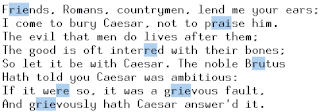Description
This article may be confusing or unclear to readers.(April 2018) |
The C3 superclass linearization of a class is the sum of the class plus a unique merge of the linearizations of its parents and a list of the parents itself. The list of parents as the last argument to the merge process preserves the local precedence order of direct parent classes.
The merge of parents' linearizations and parents list is done by selecting the first head of the lists which does not appear in the tail (all elements of a list except the first) of any of the lists. Note, that a good head may appear as the first element in multiple lists at the same time, but it is forbidden to appear anywhere else. The selected element is removed from all the lists where it appears as a head and appended to the output list. The process of selecting and removing a good head to extend the output list is repeated until all remaining lists are exhausted. If at some point no good head can be selected, because the heads of all remaining lists appear in any one tail of the lists, then the merge is impossible to compute due to inconsistent orderings of dependencies in the inheritance hierarchy and no linearization of the original class exists.
A naive divide-and-conquer approach to computing the linearization of a class may invoke the algorithm recursively to find the linearizations of parent classes for the merge-subroutine. However, this will result in an infinitely looping recursion in the presence of a cyclic class hierarchy. To detect such a cycle and to break the infinite recursion (and to reuse the results of previous computations as an optimization), the recursive invocation should be shielded against re-entrance of a previous argument by means of a cache or memoization.
This algorithm is similar to finding a topological ordering.
Example
Given

<nowiki/>classOclassAextendsOclassBextendsOclassCextendsOclassDextendsOclassEextendsOclassK1extendsC,A,BclassK3extendsA,DclassK2extendsB,D,EclassZextendsK1,K3,K2the linearization of Z is computed as
<nowiki/>L(O):=[O]// the linearization of O is trivially the singleton list [O], because O has no parentsL(A):=[A]+merge(L(O),[O])// the linearization of A is A plus the merge of its parents' linearizations with the list of parents...=[A]+merge([O],[O])=[A,O]// ...which simply prepends A to its single parent's linearizationL(B):=[B,O]// linearizations of B, C, D and E are computed similar to that of AL(C):=[C,O]L(D):=[D,O]L(E):=[E,O]L(K1):=[K1]+merge(L(C),L(B),L(A),[C,A,B])// first, find the linearization of K1's parents, L(C), L(B), and L(A), and merge them with the parent list [C, A, B]=[K1]+merge([C,O],[B,O],[A,O],[C,A,B])// class C is a good candidate for the first merge step, because it only appears as the head of the first and last lists=[K1,C]+merge([O],[B,O],[A,O],[A,B])// class O is not a good candidate for the next merge step, because it also appears in the tails of list 2 and 3, class B is also not good; but class A is a good candidate=[K1,C,A]+merge([O],[B,O],[O],[B])// class B is a good candidate; class O still appears in the tail of list 2=[K1,C,A,B]+merge([O],[O],[O])// finally, class O is a valid candidate, which also exhausts all remaining lists=[K1,C,A,B,O]L(K3):=[K3]+merge(L(A),L(D),[A,D])=[K3]+merge([A,O],[D,O],[A,D])// select A=[K3,A]+merge([O],[D,O],[D])// fail O, select D=[K3,A,D]+merge([O],[O])// select O=[K3,A,D,O]L(K2):=[K2]+merge(L(B),L(D),L(E),[B,D,E])=[K2]+merge([B,O],[D,O],[E,O],[B,D,E])// select B=[K2,B]+merge([O],[D,O],[E,O],[D,E])// fail O, select D=[K2,B,D]+merge([O],[O],[E,O],[E])// fail O, select E=[K2,B,D,E]+merge([O],[O],[O])// select O=[K2,B,D,E,O]L(Z):=[Z]+merge(L(K1),L(K3),L(K2),[K1,K3,K2])=[Z]+merge([K1,C,A,B,O],[K3,A,D,O],[K2,B,D,E,O],[K1,K3,K2])// select K1=[Z,K1]+merge([C,A,B,O],[K3,A,D,O],[K2,B,D,E,O],[K3,K2])// select C=[Z,K1,C]+merge([A,B,O],[K3,A,D,O],[K2,B,D,E,O],[K3,K2])// fail A, select K3=[Z,K1,C,K3]+merge([A,B,O],[A,D,O],[K2,B,D,E,O],[K2])// select A=[Z,K1,C,K3,A]+merge([B,O],[D,O],[K2,B,D,E,O],[K2])// fail B, fail D, select K2=[Z,K1,C,K3,A,K2]+merge([B,O],[D,O],[B,D,E,O])// select B=[Z,K1,C,K3,A,K2,B]+merge([O],[D,O],[D,E,O])// fail O, select D=[Z,K1,C,K3,A,K2,B,D]+merge([O],[O],[E,O])// fail O, select E=[Z,K1,C,K3,A,K2,B,D,E]+merge([O],[O],[O])// select O=[Z,K1,C,K3,A,K2,B,D,E,O]// done.Example demonstrated in Python 3
First, a metaclass to enable a short representation of the objects by name instead of the default class REPR value:
classType(type):def__repr__(cls):# Will make it so that repr(O) is "O" instead of "<__main__.O>",# and the same for any subclasses of O.returncls.__name__classO(object,metaclass=Type):passNext, we define our base classes:
classA(O):passclassB(O):passclassC(O):passclassD(O):passclassE(O):passThen we construct the inheritance tree:
classK1(C,A,B):passclassK3(A,D):passclassK2(B,D,E):passclassZ(K1,K3,K2):passAnd now:
>>> Z.mro()[Z, K1, C, K3, A, K2, B, D, E, O, <class 'object'>]Example demonstrated in Raku
Raku uses C3 linearization for classes by default:
classA {} classB {} classC {} classD {} classE {} classK1isCisAisB {} classK3isAisD {} classK2isBisDisE {} classZisK1isK3isK2 {} sayZ.^mro; # OUTPUT: ((Z) (K1) (C) (K3) (A) (K2) (B) (D) (E) (Any) (Mu))(the Any and Mu are the types all Raku objects inherit from, so Any stands in place of O)






